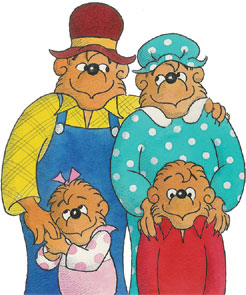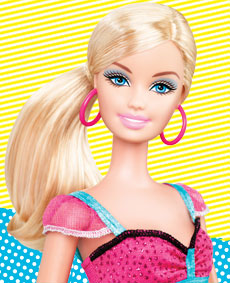Feb 2
Modern Christmas
In Gary Cross’ “Modern Children, Modern Toys” chapter, he shares his thesis that Christmas giving provides an opportunity for modern parents to show off their wealth and spoil their children without coming off self-indulgent over-spenders. (59) In today’s modern society, Cross’ thesis still holds true, as many modern parents continue to feel obligated to spoil their children through Christmas gifts, often because they feel driven to keep up with the gift giving of their friends, families, or co-workers. The media leads modern parents to believe that their role in the Christmas festivities is to indulge their children’s desires and parents who do not fear being seen as lesser parents than their peers. The expectations of gift giving in American culture are hard to combat, as many bloggers have shown the excess to which modern parents are spoiling their children because of culture pressures. One blogger claims that the average American parent spends up to seven hundred fifty dollars each year on Christmas gifts. Perhaps the most driving point is the fact that some gaming consoles have sold for as high as 30,000 dollars on EBay in the pre-holiday rush. With parents spending in excess for consoles that might normally be in the 300-dollar range, it becomes clear that some modern parents feel the need to constantly strive for the best gifts to keep their kids in touch with the most up-to-date popular culture. Cross even claims that “Christmas had long given permission to extravagance” (59), emphasizing the point that parents feel the need to bombard their children with extravagant gift giving each December. With the added pressure given by the media in commercials and television, parents are constantly coerced into upping the Christmas giving each year. The Kmart commercial from 2010, in particular, emphasizes a large amount of gifts and even places the family in a setting in which they’re surrounded by other parents to impress. Kmart tries to make the excessive gift giving affordable in their advertisement, in order to give all parents a chance to impress their friends through gift giving. Trying to represent the ideal situation, parents then continue to purchase excesses of Christmas gifts and are able to show off their love for their child to all their friends through the seemingly excessive spending. Through examinations in blogs and commercial ads, it becomes clear that Cross’ thesis about the desire to spoil children during the holidays as a means of emphasizing economic stances is still present in modern-day gift giving.
Shower them with Nikon, Xbox, PlayStation and Kindle
In Gary Cross’ article Modern Childhood, Modern Toys he draws connections to Christmas and the meaning of Santa Claus. In the times after the Civil War, toys and play became a more prominent aspect of children and their developing childhoods. When Christmas was finally recognized as a true holiday, parents began to shower their children with gifts, not to secure loyalty or represent any power differential, but to strengthen the “emotional ties within the nuclear family” (Cross, 59). As the toy manufacturing companies began producing more and more toys, the original idea of toys being handmade and born from the heart started to fade, thus the idea of Santa Claus came to be. Children would write to Santa in the North Pole with their Christmas wish list and parents would go to seek the gifts the children asked for, only if the children’s behavior had been good.

From the movie A Christmas Story: a childhood favorite that depicts the spirit of Christmas for a young boy.
In our current society, much emphasis has been placed on electronic gadgets rather than the traditional knitted sweater from Grandma or handmade wooden trinket from Dad. Instead of transformers and comic books, little boys wish for Nintendo DS’ or an Xbox. Nevertheless, gifts have grown increasingly expensive and a strain has been placed on parents to provide their children with the perfect Christmas. Cross explains this strain as “Parents teach their children to believe that Santa will bring them heaps of toys which no one had to sacrifice or even pay for.” (Cross, 60) While a parent may be able to afford the Xbox 360, the games that accompany the console are still very pricey. In present day, a family’s wealth may be depicted by how many of these new era gifts are given at Christmas time. While the parents are not purchasing the gifts for themselves, or showing off their wealth in prestigious vehicles, all of the newly expensive Christmas presents will speak loud enough for that family’s status. In the commercials that air in preparation of Christmas, many of them this last year especially started to show mother’s (in particular) developing an obsession with purchasing everything they could without facing bankruptcy in order to provide their children with that perfect Christmas experience.
Some commercials went as far as to show mother’s competing with the made-up character Santa Claus, to prove that they no longer needed him to make their children happy. With all the discounts that stores give on the expensive presents, they could do it themselves. This commercial in particular shows the mother buying the fun, cool and most modern electronic gifts while Santa is trying to fit in a small wooden truck, that looks like it would have made a little boys day 60 years ago.
The Modern View on Christmas Spending
Over the course of the twentieth century, Christmas has taken on a new purpose due to evolving consumerism and industrialism in America. Parents have taken to a sort of vicarious consumption in order to both earn the love of their children, and to try and outdo their neighbors. In an effort to appear more affluent than others, parents are increasingly spending more and more on pricey Christmas presents for their children. In Cross’s article, “Modern Children, Modern Toy,” he discusses the effects of this changing mentality regarding the gift-giving side of the holidays. He says that, “When parents bestowed presents on their offspring, they also attempted to share their excitement with the wider world of new things” (Cross, 59). This is another side effect of this new found vicarious consumption. By overspending on gifts for their children around the holidays, parents are trying to live out their desire for excitement and fun through their children. The giving of gifts turns to a new way for the parent to connect with the child without appearing to overindulge or spoil them.
Ads like this, from large retailers such as Toys R Us, are aimed at parents as well as children and try to convince parents to purchase expensive gifts around the holidays through mechanisms like door-buster sales and free offers. By doing so, they can both appease their children, and not appear to be overindulgent to their friends and neighbors. This mentality developed throughout the twentieth century do to new innovations in toy manufacture, and new increased parental concern over their children’s boredom. These sorts of concerns have created an atmosphere garnered towards over-consumption, and in which parents feel obligated to shower their children with gifts in order to appear better parents.
Barbie When I was Younger
When I was younger I played with Barbie Dolls. I had the Barbie Dreamhouse, Ken, I had a lot of things pertaining to Barbie. Barbie was created by the American Business woman Ruth Handler. Both her and her husband, Elliot handler, and his business partner, Harold Matson, created the toy company “Mattel”. The Barbie Doll brand was created March 1959. Barbie had a bit of a slow start but is now one of the most sought after toys of children. Barbie Dolls were made so that young girls could play with them. We were able to dress them up however we wanted. There were and are a lot of accessories that go along with Barbie Dolls. They were made so that you would go out and get the doll as well as the many accessories that came along with them. Me as a child I enjoyed dressing up my dolls in all of the different clothes and playing with the dream car as well as the dreamhouse. Barbie Dolls as well as their accessories are anywhere between $14.49-$129.99 depending on what item you get. When we did the readings in class on the child archive museum, our article talked about the types of toys that were being played with by both genders. When discussing girl toys, it talked about how the toy played a part in explaining our gender roles. Little girls played with these toys and it taught them how to be young ladies. It taught them how to dress, cook, and clean. These toys taught and does teach us our roles in society.
A Modern Christmas Carol
In his writing, Gary Cross uses Charles Dickens’ A Christmas Carol to describe the cultural link between wealth and Christmas that was developing in the nineteenth century. Cross suggests that Scrooge was able to buy “the Cratchits joy” with his gifts (59). Due to the “emotional ties” created by gift giving in the domestic setting, family life was idolized and children soon became the face of this developing innocent façade of the nineteenth century (59). In part, this façade that the child represents is an illusion created by a parent through the act of gift giving. With a gift, a parent is able to relive their own childhood, display their “personal affluence,” and proclaim the child as a “deserving” one (59). Cross’ opinion of a child being seen as “deserving” is an idea that holds true in today’s society (59).
Using themes from A Christmas Carol as a representation of today’s society, the child can be viewed as the Cratchits, and the parent as Scrooge. A parent is willing to give “selflessly” to their child, but oftentimes has an ulterior motive of trying to prove abundance and wealth (59). Striving to provide the child with a “shower of gifts,” a parent becomes the ultimate consumer during the Christmas season (59). They become prone and privy to any inkling they might have about joy that their child could derive from their wealth and abundance of gifts. The child is encouraged to indulge and take part in the abundance offered by the Christmas season. Advertisements evoke lengthy Christmas lists and outrageous wants and desires (which are often times strewn by the media as “needs”) from the child. In this way, the child is conditioned by society to hold a certain expectation of a plentiful Christmas. The parent, on the other hand, is expected to react swiftly to the demands of the child, no matter the cost. With the evolution of Santa Claus in the twentieth century as an integral icon of Christmas, the parent finds a scapegoat for lavish spending and indulgence (60). A parent, among other parents, can appear wealthy, yet selfless, through the act of copious giving to the child; all the while hiding behind the “jolly fat man” (60).
American Girl- Dolls & Books.
When I was 10 years-old, there was only one toy I truly desired for Christmas that year. More than anything, I wanted an American Girl Doll. Having had access to their line of books at my elementary school library, as well as my many friends who were mailed the monthly American Girl catalogues that displayed the latest accessories for your miniature pal, I was groomed to desire one of the delicate and interesting dolls. The dolls and their corresponding books series, were introduced by American Girl Company in 1986 (acquired by Mattel in 1998) with the intent of “introducing historical characters to give girls an engaging glimpse into important times in America’s past… Gentle life lessons throughout the stories remind girls of such lasting values as the importance of family and friends, compassion, responsibility, and forgiveness,” according to the American Girl website. Just as Sterne emphasizes the importance placed on play not only being entertaining, but also used as educational stimulation, the strongest selling point to the American Girl series is the fact that they represent historical eras of time. Not only are little girls combatting boredom with the dolls, but ideally, also learning historical information. As previously mentioned, the dolls are also supposed to emphasize a certain set of values to their girl consumers. According to an article in The New York Times, “This return-to-innocence approach has corporate appeal.” In 2004, the company had reached $350 million dollars in sales, and looked upon as a more suitable toy to Barbie (who ironically was also created and manufactured by Mattel.) Similar to the points Cross makes in “Modern Childhood, Modern Toys” concerning gender roles, the American Girl dolls not only emphasize the classic maternal qualities dolls often invoke, but also on what defines an American girl: responsible, compassionate, and age-appropriate.





